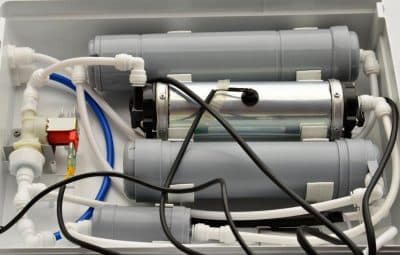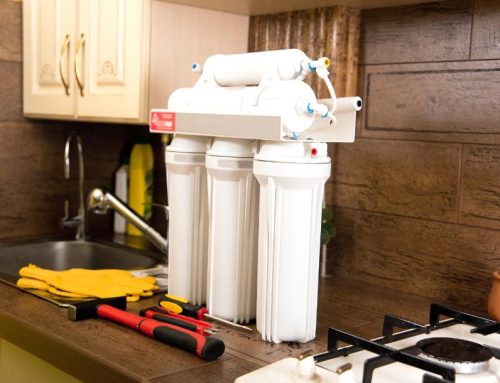UV water purification systems are a cost-effective way to purify water. They use ultraviolet light to kill microorganisms by attacking their DNA. Compared to other methods, UV light is chemical-free. However, there are some things to consider when choosing a UV water purification system. If you live in an area with hard water, you may want to consider using a water softener first. Hard water can also clog the quartz sleeve around the UV lamp, reducing its germicidal effect.
UV light is a physical process
UV light is a form of light that can disinfect water through a series of processes. These processes include ultraviolet irradiation, low-pressure, high-intensity and pulsed-UV. These processes are effective against microorganisms but can be hindered by water chemistry. The main concerns are water hardness, tannins, turbidity, iron and manganese, and UV transmittance. The presence of tannins or iron can stain the quartz sleeve component, which is the primary part of UV water purification systems. These factors should be reduced to a minimum in order to improve the effectiveness of UV treatment.
UV light irradiation works by causing photo-degradation in different materials. The light wavelengths range from 200 to 310 nm. Most UV water purification systems utilize the range of 250-270 nm to effectively destroy microorganisms. The energy released from UV light is absorbed by molecules in their ground state, causing them to undergo thermodynamically-efficient chemical and physical processes. The resulting energy disrupts the DNA of microorganisms, preventing them from reproducing.
It destroys microorganisms by attacking their DNA

UV water purification systems utilize ultraviolet light to destroy microorganisms by attacking their genetic material. They use special lamps that emit UV light at a specific wavelength that disrupts microorganism DNA. Germicidal lamps emit UV light with a specific wavelength of 254 nanometers. The germicidal UV lamp exposes air and water to the light, which deactivates microorganisms’ genetic material, rendering them harmless.
The UV light that UV water purification systems use is extremely powerful because it kills bacteria and viruses. The light penetrates the microorganisms’ DNA and destroys their ability to reproduce. As a result, UV water purification is considered one of the most effective methods of disinfection. Moreover, UV water purification does not produce any carcinogenic disinfection by-products.
It is chemical-free compared to chlorination
A UV water purification system is the best option for people who want to protect their health from chlorine in their drinking water. Although municipal water suppliers often do their best to maintain water quality, chlorine resistant microorganisms still make it into municipal water supplies and can occur naturally in well water. These contaminants cause thousands of documented health problems each year. UV water purification systems have low operating costs and will quickly pay for themselves.
In contrast, chlorine disinfection can cause many by-products and is not chemical-free. UV is fast and chemical-free. It only requires low residuals of chlorine. The other major difference between UV and chlorine disinfection is that UV does not produce toxic byproducts like chlorine. Moreover, chlorine disinfection is slow, and requires excessive amounts to effectively remove organic contaminants.
It is cost-effective compared to other methods
UV water purification systems use ultraviolet light to sterilize water. When the water flowing through a pipe is stopped, it sits in the UV chamber. UV is very efficient against most pathogens, but some have thick cell walls and cannot be destroyed by UV. UV systems are an economical way to disinfect wastewater.
UV purification systems use a lot less energy than other methods. In fact, they are much more cost-effective than distillation or other methods of water purification. Filtration systems are cost-effective because they remove almost all contaminants, while distillation and UV water purification require more energy. UV water purification systems can be installed vertically or horizontally. Some of the models are designed to work on a wide range of water turbidity levels.
Unlike chlorination and ozonation, UV systems do not require expensive chemicals or water treatment processes. UV lamps emit intense light, which kills microorganisms and pathogens. The light alters the DNA of microorganisms and prevents their reproduction. UV water purification systems also do not change the taste or color of water, unlike other methods of water purification.
It is environmentally friendly
The use of UV water purification systems is environmentally friendly, safe, and requires little maintenance. These systems are energy efficient and only require bulb replacements every year. They also deliver effective disinfection without affecting the taste or odor of the water. As an added bonus, UV water purification systems are approved by the Food and Drug Administration.
Municipal wastewater disinfection is a growing market segment, as it helps to protect public health and the environment. Municipal wastewater treatment plants typically discharge effluent to receiving bodies of water from one or a few discharge points. The wastewater can place a disproportionate burden on these receiving bodies, reducing fauna populations. In addition, the wastewater can disturb the ecosystem and endanger human health.



